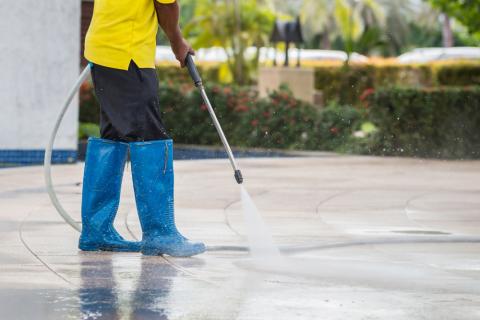Water is crucial to businesses of all shapes and sizes. At the very least, we need water to heat, cool and clean our sites, and with demand growing, our limited water supply is becoming increasingly stretched. It’s perhaps not surprising, then, that businesses are starting to see water as a real business priority.
While water scarcity is a potentially serious challenge facing us all, it’s encouraging to see that many businesses are now making a real effort to become water stewards and manage the water they use in a sustainable way. At SES Business Water, we know just how precious water is as a resource, so we hope that we will continue to see more businesses taking a proactive approach to their water consumption.
The tide is turning
Typically, water has been a lower priority for the majority of organisations than other utilities – most organisations have an energy efficiency plan in place, for example, while water efficiency plans are much less likely - but it appears that attitudes are changing.
CDP, formerly the Carbon Disclosure Project, runs a global disclosure system that allows companies, cities and regions to measure and manage their environmental impacts. In their latest Global Water Report, they found that more companies than ever before are disclosing their water footprint through CDP – 2,025 organisations did so in 2017, which is an increase of 41% from 2016.
The report revealed that the number of companies that are integrating water quality into their risk assessments has risen by 55% since 2015. CDP also ranks businesses according to their water management, and it’s encouraging to hear that a record number of organisations – 74 in total - achieved a score of ‘A’ on their disclosure.
Becoming a water steward
Don’t get left behind when it comes to taking a fresh approach to your water management – get started now so you can start seeing the benefits as soon as possible. Water stewardship doesn’t have to be difficult – here are our top tips:
1 - Make a public pledge
CDP isn’t the only way to publicly disclose your water footprint. Sixty organisations, including household names like Sainsburys and the National Trust, have signed the Catchment Management Declaration, which aims to help businesses to align their sustainability strategies with the water targets in the Government’s 25 Year Environment Plan. Those that have signed the declaration have committed to progressing sustainable water management and increasing citizens’ awareness of their role in water stewardship.
By making a public pledge like this, you may find that you’re more motivated to become more water efficient, and it could also set you apart from your competitors. You don’t have to make a pledge on a grand scale, such as through the CDP or CMD, if you don’t want to – simply declaring your intentions on social media, and showing how you’re acting on them, can be just as effective!
2 - Implement water efficiency measures
No matter how big or small your business is, it’s likely that you can improve your water efficiency. From small changes, like placing displacement devices in your toilets, to bigger investments such as installing a greywater recycling system, there are water efficiency solutions for every budget.
We’ve also got lots of water efficiency resources to inspire you to become more water savvy! Our Water Efficiency Guide contains lots of useful information on how you can save water at work, and you can download our Water Warrior posters to encourage your staff to get on board. Visit the Water Efficiency section of our Insight page to find out more.
3 - Encourage others to become more water efficient too
Once your organisation is well on its way to water stewardship, you should start spreading the word and encouraging others to get involved too!
When calculating your water footprint, you should include all of the water you use in your own operations, but you could go even further by including water consumption throughout your supply chain. Therefore, it makes sense for you to prompt your suppliers to start saving water too; sharing any benefits that you have gained from becoming more water efficient is a good way to do this.
You could also help your customers to save water in a number of different ways, depending on the nature of your business. If you manufacture goods, for example, you could inform your customers of the most water-efficient ways to use your products, or if you work in an establishment with customer toilets you could put up posters to educate customers on how to save water in the bathroom.
At SES Business Water, we’d like to see all of our customers become water stewards, and we’ve got lots of resources to help you do so – visit our Insight pages to find out more.

